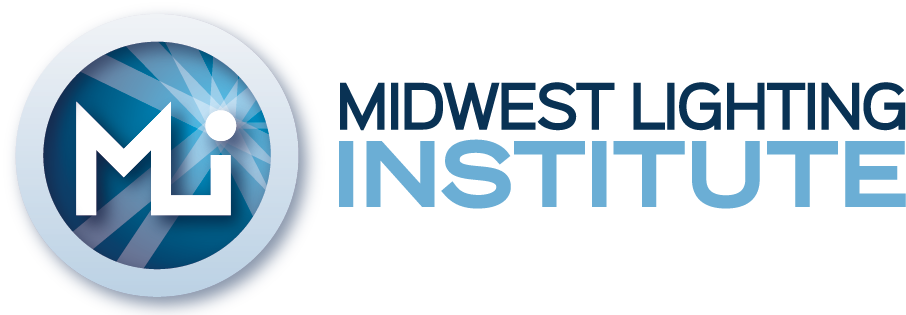RESEARCH
MLI SUPPORTED PUBLISHED STUDIES
Impact of upgraded lighting on falls in care home residents
Journal of the American Medical Directors Association (JAMDA) 2022
Leilah Kristine Grant, Ph.D.; Melissa St. Hilaire; Jenna Heller; Rodney Heller; Steven Lockley, Ph.D; Shadab Rahman Ph.D.
Objective: This two-year study was the first of its kind to investigate the potential for reduced falls of elderly people in nursing homes based on previous science that demonstrated how lighting systems designed to entrain the circadian system have proven to improve alertness, cognitive function, and visual acuity, as well as result in improved sleep.
Methods: The study consisted of two pairs of nursing homes, with each pair having a control facility and an experimental facility. Data was collected from all four facilities for a full year to establish a baseline, after which the two experimental facilities had the lighting changed to programmed tunable lighting that used blue-rich, higher light levels during the day, and warmer colored, low-level lighting in the evening.
Results: The data on falls consisted of over 126,000 patient-days of data and the results showed a statistically significant 43% reduction in falls when comparing the experimental facilities to the control facilities. Conclusions: This study provides conclusive evidence that lighting can provide a low-cost pathway to improved living conditions at nursing homes. MLI applied for and received a method patent for the lighting system design which covers specific color criteria delivered into the various spaces within the nursing home at established times of the day/night. Our goal is to license the use of the method to other facilities in exchange for developing more research and collecting more data in this important work.
Note: The impetus for this study was a pilot study designed by MLI and installed by Energy Performance Lighting, in which the residential home administrator reported that their fall rates were reduced by 32%, sundowners reduced by 38%, and opioid needs were 20% below the next lowest nursing home in their region. This study was funded by MLI to evaluate the potential for reduced falls in nursing homes using an independent research team from Brigham and Women’s Hospital, a teaching affiliate of Harvard Medical School
Lighting in Senior Care Centers: Comparing Tunable LED Systems to Conventional Lighting Systems in Four Senior Care Centers
Pacific Northwest National Laboratory 30112
Jessica M. Collier; Dorukalp Durmus, Ph.D.; Robert G. Davis, Ph.D.
MLI invited Pacific Northwest National Laboratory (PNNL) to document the performance of the lighting systems used in the above study as a US Department of Energy (DOE) GATEWAY evaluation. This publication provides additional information on the research project including more details on the energy savings, lighting levels and lighting color characteristics. The results of the study provide third-party validation for the overall 67% energy savings achieved on the project and provides an analysis of the delivered light in terms of various metrics that are considered in the lighting industry.
The Effect of Blue-Enriched Lighting on Medical Error Rate in a University Hospital ICU
The Joint Commission Journal on Quality and Patient Safety 2020; 000:1-11
Yanjun Chen, MD, PhD; Aimee Teo Broman, MA; Geoffrey Priest, MD, MBA; Christopher P. Landrigan, MD, MPH; Shadab A. Rahman, PhD; Steven W. Lockley, PhD
Objective: This study evaluated whether the introduction of short-wavelength-enriched white light in nursing station areas of an Intensive Care Unit (ICU) would result in fewer medical errors.
Methods: Blue-enriched Lighting was installed in the nursing areas, break room and hallways of the 24-bed ICU area of a hospital, with the melanopic Daylight Efficacy Ratio (DER) being doubled throughout all areas. Patient records for those staying more than 24 hours in the ICU were randomly selected and analyzed during a 5-month period and compare to randomly selected records from the same five-month period taken from the previous year. From these 1067 records, 192 records (99 pre-intervention, 93 post intervention) were determined to contain medical errors, and these were analyzed to assess the differences in medical error rates between the two conditions.
Results: The study found a statistically significant 33% reduction in high-severity harmful errors (Categories F-I) but not a statistically significant change in the overall number of medical errors. Conclusions: This study provides a good indication of how lighting can increase alertness and lead to fewer errors, however this work needs to be expanded to give it greater power and utilize more advanced LED lighting technology.
MLI Provides Advisory Roles
Exposure to short wavelength-enriched white light and exercise improves alertness and performance in operational NASA flight controllers working overnight shifts.
Journal of Occupational and Environmental Medicine, Publish Ahead of Print DOI : 10.1097/JOM.0000000000002054
Laura K. Barger, Ph.D., Jason P. Sullivan, Steven W. Lockley, Ph.D. Charles A. Czeisler, Ph.D.
Objective: This study evaluated the efficacy of a combined short-wavelength-enriched white light and exercise fatigue countermeasure during breaks for flight controllers working overnight shifts
Methods: Twenty NASA flight controllers were studied for two blocks of nightshifts in ISS mission control, randomized to either the control or countermeasure condition. The countermeasure constituted passive exposure to blue-enriched polychromatic lighting for three 20-minute intervals, which included 10 minutes of exercise and occurred before and twice during their shifts. Alertness, performance and mood were evaluated.
Results: Flight controllers reported being significantly more alert (p <0.0001) and happy (p=0.003) and had faster reaction times (p <0.05) during the countermeasure condition compared to the control condition. Conclusions: The combined light and exercise countermeasure improved alertness, performance and mood in shift workers overnight. Further research is necessary to determine their relative contribution.
WORK WITH US
If you or your organization is interested in advancing the science of lighting and human physiology, we’d love to talk. Contact us below.
WORK WITH US
If you or your organization is interested in advancing the science of lighting and human physiology, we’d love to talk. Contact us below.
